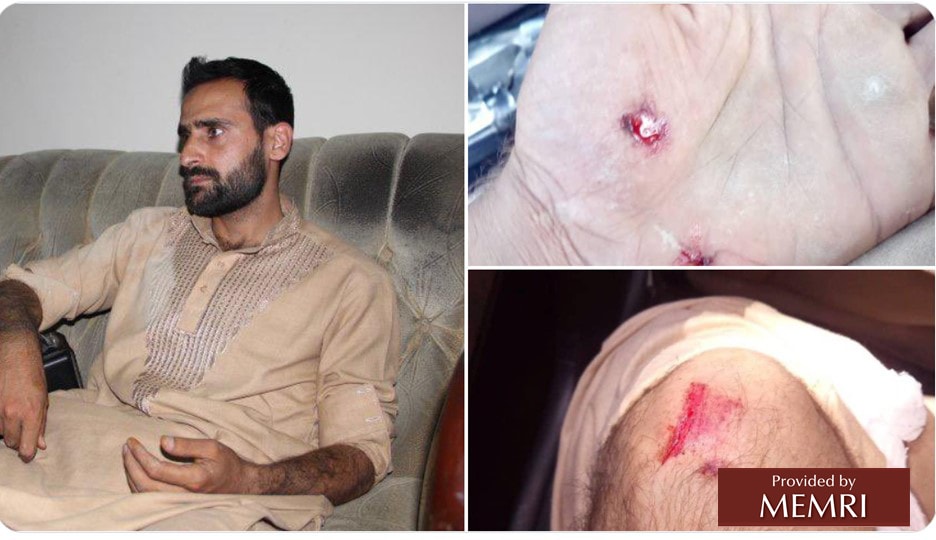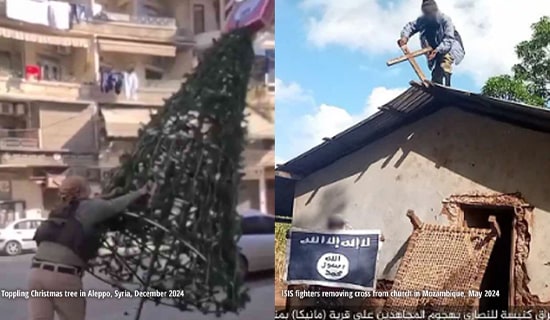Since the Islamic Emirate of Afghanistan (the Taliban jihadi organization) seized power in Kabul on August 15, the Taliban mujahideen's violence against journalists is growing by the day. The Taliban have regularly threatened and beaten reporters, photographers, and television cameramen. Although the Islamic Emirate had promised the world that it would respect the rights of the media, women, and minorities, reports show that the Taliban have abducted and tortured journalists during the first four weeks of the jihadi organization's rule in Afghanistan.[1]
Mullah Khairullah Khairkhah, a former Guantanamo Bay prisoner and currently the Taliban's Minister of Information and Culture, told the media: "You are dangerous, that's our definition of media," and added: "You are like a pen that could turn into a shovel and destroy things."[2] The Taliban government's attitude toward the media has created a climate of fear among journalists, forcing many Afghan media organizations to shut down. According to a ToloNews report, at least 153 media organizations – radio, print, and television channels – have stopped publishing in 20 provinces of Afghanistan since the Taliban took power.[3]
After the Taliban took over, several reporters were beaten by jihadi fighters in various provinces. While the Taliban's torture of journalists in Kabul are noticed by the international press, such violence in other provinces goes unreported. "The Taliban's clash with journalists has been a concern for all reporters since they took control of Afghanistan and Kabul," said Parwiz Aminzada, the deputy head of a journalist's association in Parwan province.[4]

Journalist Imran Falzy was beaten and tortured, photos tweeted by Samiullah Mahdi
In late-August, TOLOnews reporter Ziar Yaad and his cameraman Baes Majidi were beaten by the Taliban in Kabul city while they were working on a report. "While we were taking footage, the Taliban came and, without asking us who we were... took my mobile phone and the camera of my cameraman," Yaad said, adding: "We showed our reporter badges but they came and slapped us and beat us with their guns."[5] On August 18, Taliban militants assaulted three journalists belonging to Ariana News, Pajhwok News, and Khurshid TV. Ariana News reporter Mahmoud Naimi and Pajhwok photographer Babrak Aminzadah were beaten while covering a demonstration in Nangarhar province, while Khorshid TV journalist Nawid Ahmad Kawesh was beaten at the Kabul international airport.[6]
On August 19, it emerged that the Taliban had forbade Shabnam Dawran, a female journalist at the nation's Radio Television Afghanistan (RTA), from returning to work. "I wanted to work, but they did not allow me to work. They told me that the regime has changed, and you cannot work," Shabnam Dawran said.[7] Khadija, another female journalist at RTA, was not allowed to work. "I went to the office, but I was not allowed in. Later other colleagues were banned, too. We talked with our new director who has been appointed by the Taliban," Khadija said, adding: "There has been a change in the programs; they broadcast their desired programs; there are no female presenters or female journalists.[8]
The Taliban violence began attracting attention after thousands of Afghan women marched against the Taliban on September 7 in Kabul and armed Taliban fighters stopped and tortured journalists who went to cover the protests. Samiullah Mahdi, a journalist and lecturer at the Kabul university, shared photos of Kabul News TV reporter Imran Falzy who was beaten by the Taliban for reporting on the women's demonstrations.[9] Mahdi also tweeted that at least 14 journalists were detained by the Taliban for covering the women's demonstrations in Kabul.

Shabnam Dawran, a female journalist, disallowed by the Taliban from work
Fariba Qolizadeh, a female journalist who expressed support for the anti-Taliban resistance front led by Ahmad Massoud in the Panjshir Valley, tweeted in Persian that the Taliban had confiscated her identity card and camera.[10] In the other provinces, the Taliban detained and tortured journalists and photographers. Photographer Emroo wrote: "In Herat I spent two nights with Morteza Jan, he is very creative photographer and hospitable man. We walked in the streets of Charsu, Herat and other parts of the city. The Taliban arrested him because he was covering the women's protest in Herat and he is in a detention center..."[11]
During the two-decade American presence in Afghanistan, scores of newspapers, radio stations, and television channels appeared, nursed in an atmosphere of press freedom, rights for women and minorities, individual liberty, and democratic politics. A host of young journalists learned to write and speak freely. "Journalism is my profession. It's what I've learned and what I believe in," said Neamat Naqdi, one of the journalists with Etilaatroz, a media group known for its investigative reports, who was beaten and tortured.
Despite the torture, Neamat Naqdi reaffirmed: "Of course I will continue, even if it might be hard. Journalists are now needed more than ever in Afghanistan."[12] Neamat Naqdi tweeted a photo of himself with the following words: "Five days have passed since that horrible event. My eyes and ears were severely damaged by the beating, none of which improved. This worries me a lot."[13]

Photographer Taqi Daryabi (left) and Neamat Naqdi were severely lashed
Khadim Karimi, chief editor at Etilaatroz, noted in a tweet that he and four journalists from his organization were detained by the Taliban for covering the women's protests; and two of them – Taqi Daryabi and Neamat Naqdi – were lashed severely, adding: "Their face was torn. Their backs and legs are injured. We sent them to hospital."[14] Zaki Daryabi, the publisher of Etilaatroz, warned in an interview: "This is the first very serious incident involving journalists in Kabul, and if we don't stand together, much worse things may happen."[15]
Zahra Rahimi, a journalist with ToloNews, tweeted on September 11: "More pictures are coming from what Taliban did to our people and journalists in recent protests."[16] Her tweet contained an image of Afghan journalist Habib Farzad, who was tortured by the Taliban and later photographed by Andrew Quilty, an Australian photojournalist based in Afghanistan.[17]
In another tweet, Zahra Rahimi noted that journalists from ToloNews, Nor TV, Keled Group, Reuters, Kabul News TV, and others were among 14 journalists and photographers arrested by the Taliban for covering the September 7 women's protests. German broadcaster Deutsche Welle tweeted on August 19: "Taliban fighters hunting one of our journalists have shot dead a member of his family in Afghanistan and seriously injured another. The militants were conducting a house-to-house search to try and find him..."[18]

Photo of a journalist tortured by the Taliban tweeted by Zahra Rahimi
Owing to an environment of fear and other reasons, scores of Afghan media houses ceased broadcasting and publication in the weeks after the Taliban seized power. Milma Radio, a radio station established in 2011 in Paktika province, was employing 35 journalists and broadcasting in 13 provinces. It has ceased broadcasting. "Due to an inappropriate working environment and economic problems, we stopped our activities," said Yaqob Khan Manzoor, editor-in-chief of the radio station, as per a ToloNews report.[19]
Masroor Lutfi, an official of the Afghanistan National Journalists Union, summed up the situation of the Afghan media under the Taliban regime: "The continuation of this trend has created concerns. We urge the international organizations to take immediate action to address this problem. Otherwise, soon it will be the end of press freedom and other human and civil liberties."[20]
* Tufail Ahmad is Senior Fellow for the MEMRI Islamism and Counter-Radicalization Initiative. His writings can be read here.
[1] See also, MEMRI Daily Brief No. 308, After The Fall Of Kabul – The Afghan Taliban's Crimes In The Early Days, August 23, 2021; MEMRI Special Dispatch No. 9533, Atrocities Committed By The Afghan Taliban Since The Fall Of Kabul, September 2, 2021.
[2] Twitter.com/Samiullah_mahdi, September 12, 2021.
[3] ToloNews.com (Afghanistan), September 13, 2021.
[4] ToloNews.com (Afghanistan), August 26, 2021.
[5] ToloNews.com (Afghanistan), August 26, 2021.
[6] Ariananews.af (Afghanistan), August 18, 2021.
[7] Twitter.com/vatantoday, August 19, 2021.
[8] ToloNews.com (Afghanistan), August 19, 2021.
[9] Twitter.com/Samiullah_mahdi, September 7, 2021.
[10] Twitter.com/FaribaQolizadeh, September 7, 2021.
[11] Twitter.com/twitter.com/EmrooPhotos, September 10, 2021.
[12] Twitter.com/ ZDaryabi, September 12, 2021.
[13] Twitter.com/NeamatNaqdi, September 13, 2021.
[14] Twitter.com/ khadim_karimi, September 8, 2021.
[15] Twitter.com/globalfreemedia, September 10, 2021.
[16] Twitter.com/ZahraSRahimi, September 11, 2021.
[17] Twitter.com/andrewquilty, September 10, 2021.
[18] Twitter.com/dwnews, August 19, 2021.
[19] ToloNews.com (Afghanistan), September 13, 2021.
[20] ToloNews.com (Afghanistan), September 13, 2021.





